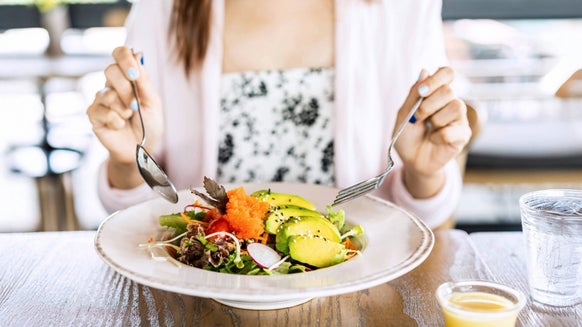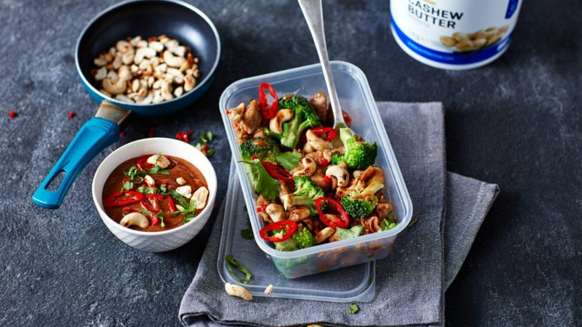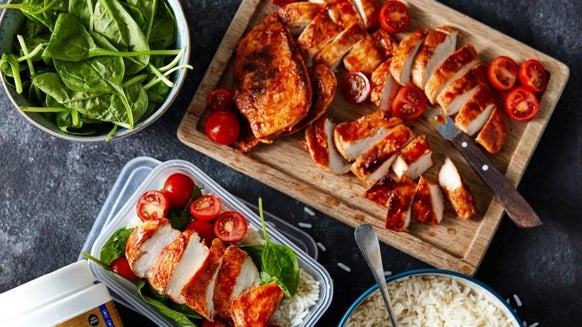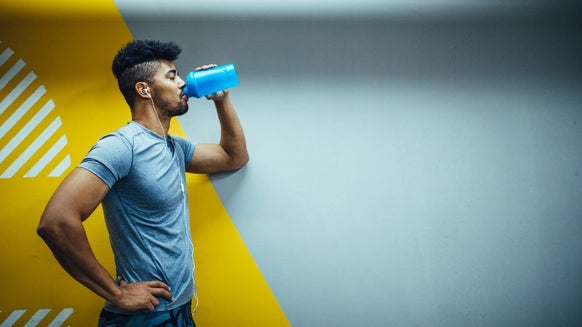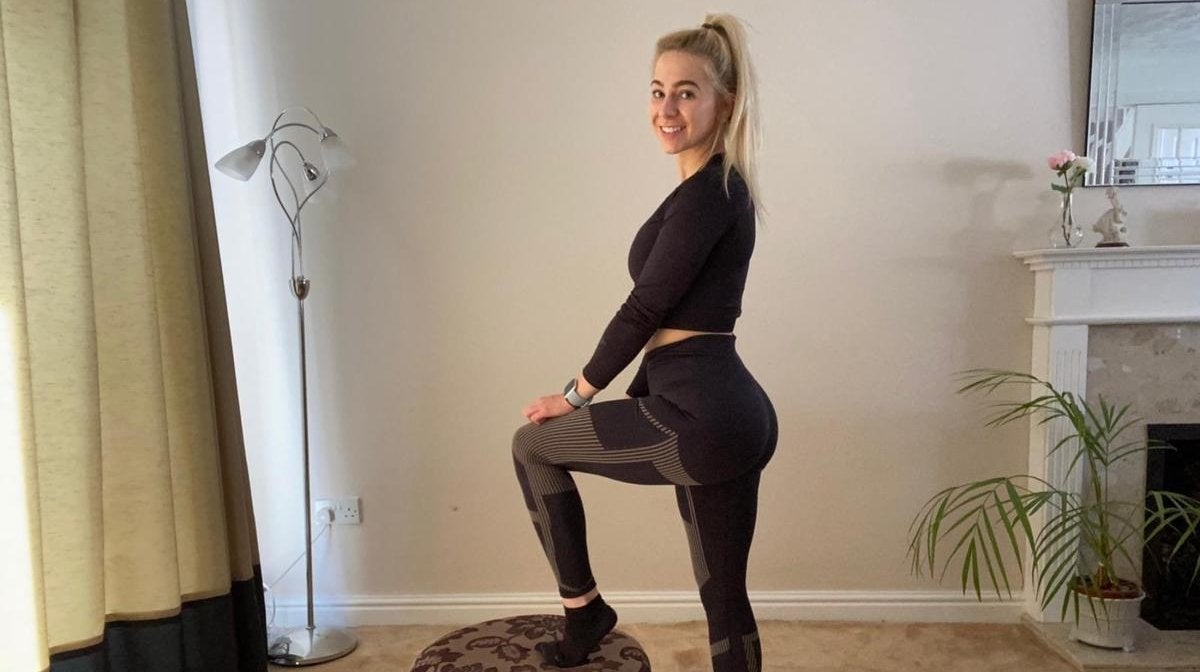
Our Work Out From Home series is here to help you stay on track with your fitness goals even when the gym isn’t an option. Whether you’re completely new to this or no stranger to a heart-hammering session, these workouts are perfect for all levels of ability.
Short on time? We got personal trainer & online fitness coach, Katie Nelson, to give us a quick but killer glute workout — no equipment needed. Whether you’re training for aesthetic reasons, strength, hypertrophy or performance, striving for strong and well-developed glutes should be factored into your programme.
9 Butt Exercises to Tone Your Glutes
This workout consists of 9 different exercises (although some are single-leg exercises – so make sure you follow along with the video so you don’t miss one side!). You will be guided through 40 seconds of work with 20 seconds of rest between each exercise, and all you’ll need is a stool or chair and your bodyweight!
Exercises: 15 Duration: 15 minutes (40 seconds on, 20 seconds off) Equipment: Sturdy surfaces such as a table, bench, chair, or ledge.
1. Sumo Squat With Pulse
Video reference: 0:42
Technique: Your feet should be spread just wider than hip width, break at the hips and knees to squat down to a comfortable depth, pulse (demonstrated in the video) before returning to the start position.
Tips: Be sure to keep your back neutral/straight – try to keep your chest up and proud to help avoid your back rounding, plant your feet into the floor and drive through your heels. Keeping your knees tracking over your toes, squeeze your glutes hard when you reach the top position and brace your core throughout the movement. Imagine you are ‘screwing your feet outwards’ when they are planted into the floor – this will help to engage your glutes more.
2. Glute Bridge with 2-Second Hold
Video reference: 1:47
Technique: Your feet should be in a position where you are able to touch your heels when your arms are straight when on the floor. From this bottom position, push your hips up to the ceiling and squeeze your glutes for 2 seconds once you reach the top.
Tips: Maintain a neutral back angle throughout.
3. Lateral Step-Up
Video reference: 2:47 (right leg), 3:47 (left leg)
Technique: You’ll need a stool or something to step up onto for this exercise. Place one leg up onto the stool with the foot on the floor just there to provide balance. Drive through the leg on the stool to stand up. Return to the start position in a controlled manner.
4. Deficit Lying Glute Abduction
Video reference: 4:57 (right leg), 5:47 (left leg)
Technique: Lying on your side, facing forward and with your leg out to the side, let your leg drop beyond the midline of your body (this places a stretch on the glute medius muscle). Raise (or ‘abduct’) your leg as demonstrated in the video.
Tips: If you find this difficult, then bend at your knee as this creates a shorter lever, meaning you will need to put in less effort.
5. Squat Walks
Video reference: 6:47
Technique: Remaining in a squat position throughout, step side to side (twice left and twice right).
Tips: Keep tension in your glutes throughout, and keep you chest up and back straight.
6. Bulgarian Split Squat
Video reference: 7:47 (right leg), 8:45 (left leg)
Technique: Rest one leg on the stool as support and step into a lunge stance with your front foot (try a slightly wider stance if you’re struggling to balance!). You should aim to push all your bodyweight through the front leg, although you will still feel your quads in the supporting leg working. You should feel a stretch in the quads of your back leg once you go down.
Tips: Push through your heels for the best glute activation, engaging your core muscles throughout (this will help maintain balance and technique throughout the exercise). Be sure to maintain a neutral spine too!
7. Reverse Lunge to Lift
Video reference: 9:47 (right leg), 10:47 (left leg)
Technique: Enter a lunge stance backwards, then drive forward with your back leg, squeeze glutes together at the top and use your arm to balance yourself. Be sure to drive through all the way to the top.
8. Straight Leg Kick Back
Video reference: 11:47 (right leg), 12:47 (left leg)
Technique: Get into a ‘table top’ position on the floor, straighten one of your legs and kick it back – fully extending your hip.
Tips: Keep your back straight and squeeze your glutes for 2 seconds at the top of each rep.
9. Single-Leg Deadlift
Video reference: 13:50 (right leg), 14:45 (left leg)
Technique: Similar to a Romanian Deadlift with one leg, plant your foot into the ground, lift your back leg up (to make it easier use your back leg to gently support yourself for balance). Bend at the hips until you feel tension in your hamstrings and glutes, then return to the start position. brace your core, use focal point to concentrate on as you do the exercise.
Tips: Keep your knees ‘soft’ (slight bend/not locked out), brace your core, maintain a neutral spine and utilise a focal point (focus on a specific spot in your field of view – this will help if you are struggling to maintain your balance while on one leg).
Your Questions Answered
1. Are your glute exercises suitable for men and women?
Yes! Whether you’re training for aesthetics or athletics, strong and developed glutes are for you! Well-developed glutes provide stability to the surrounding joints – the hip, knee and lower back. Due to this, you can count on effective glute exercises to improve your daily function (tasks like standing out of a chair or walking upstairs), provide some protection from injuries via added stability and joint control, and they can even be the key to add those elusive kilos to your lifts.
2. How many times a week should I exercise my glutes for maximum effect?
It depends. The intensity, volume and duration of a session will dictate how frequently you can (and should) exercise your glutes. Initially, you may find that once per week will be enough for you to see progress, however, you will eventually need to add in more volume, intensity or new stimuli (like different exercises) to maintain the same rate of progress.
With sufficient sleep and nutrition, you may find that 2 direct sessions per week would be most effective for developing your glutes – best performed a few days apart so that your glute muscles have time to recover and develop between sessions.
3. How long should a glute workout last?
Again, it depends. If the session is high intensity, or if you’re strapped for time, then a 15- minute session will, of course, be better than no session at all. A workout focused solely on your glutes will undoubtedly indirectly work for other muscle groups, be it your core or legs, so you may find that an effective session would last around 60-minutes (including a 5-10 minute specific warm-up).


